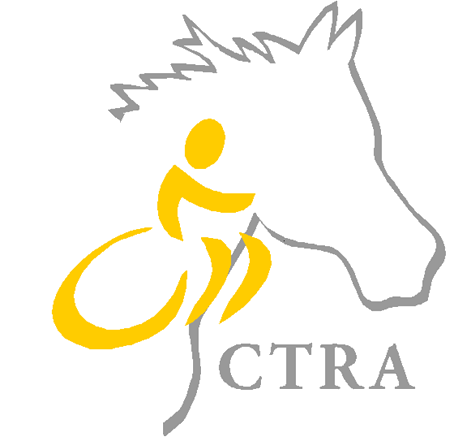Taryn's Story
Taryn started riding with CTRA in 2014 on the referral of her pediatric physiotherapist. While therapeutic riding was recommended with great potential to help Taryn’s sensory integrative dysfunction diagnosis, the family never imagined the extent of the impact. “She amazed us all,” says mom Catherine. “I would never have imagined she would sit on a horse let alone stay on one for any length of time. You will be pleasantly surprised at what may have seemed impossible for your loved one.”
Catherine credits therapeutic riding with a remarkable improvement in Taryn’s balance, core strength, posture, and flexibility. She believes the deep therapeutic muscle stimulation made possible by the horse’s movement benefits Taryn in ways not possible through conventional physiotherapy.
For the uninitiated, it can be hard to understand the incredible therapeutic value of therapeutic riding interventions. However, modern research is providing a growing body of research proving the benefits uncovered by the ancient Greeks and experienced by riders like Taryn every day.
Often referred to as the three-dimensional (up/down, side/side, back/front) movement of the horse, the equine gait does a powerful job of mimicking the human walk. This simulated motion results in many positive outcomes for persons with reduced or impaired mobility – from improved digestion and circulation to the normalization of muscle tone and reduction in spasticity. For riders rehabilitating from a traumatic injury, therapeutic riding can help regain the muscle memory necessary for independent mobility.
In Taryn’s case, the repetitive movements of the horse “improve her coordination and facilitate motor planning,” explains Catherine. In addition to reducing spasticity, therapeutic riding “has made a remarkable and measurable difference in Taryn’s balance and range of motion.” For Taryn, these results far exceed anything that she has achieved through other forms of conventional exercise. Therapeutic riding helps to stimulate all of Taryn’s senses, including her vestibular system. Riding also helps Taryn to coordinate her senses, providing a highly effective therapy for her sensory integrative dysfunction.
Of course, the experience is far from simply physical. “Taryn loves to ride and has a powerful connection with therapy horse Floella and her volunteers,” Catherine explains. “She loves the sense of freedom.” Although Taryn is non-verbal, she clearly communicates the deep joy she receives from her time on a horse – particularly when her riding takes her out and about on the trails of beautiful Providence Farm. “The experience of watching your child be so independent is incredibly gratifying,” says Catherine. “It is so exciting to watch them access places otherwise inaccessible due to their challenges with mobility.”
Catherine reports that therapeutic riding remains Taryn’s “most important therapy,” crediting the service to improving her daughter’s sense of well-being and quality of life. She also expresses profound gratitude for the community members that dedicate their time and effort to making therapeutic riding available to Taryn, and other CTRA riders: “We are eternally grateful to all of the amazing volunteers for making therapeutic riding possible.”
For families not yet involved with the program, Catherine strongly recommends therapeutic riding as a “multi-sensory experience in a non-clinical environment,” noting that the experience is a “unique and empowering opportunity.” To CTRA’s supporters, Catherine has the following words: “We would like to extend our deepest thanks to CTRA for all they do to support Taryn. We feel so fortunate to be able to participate.”


